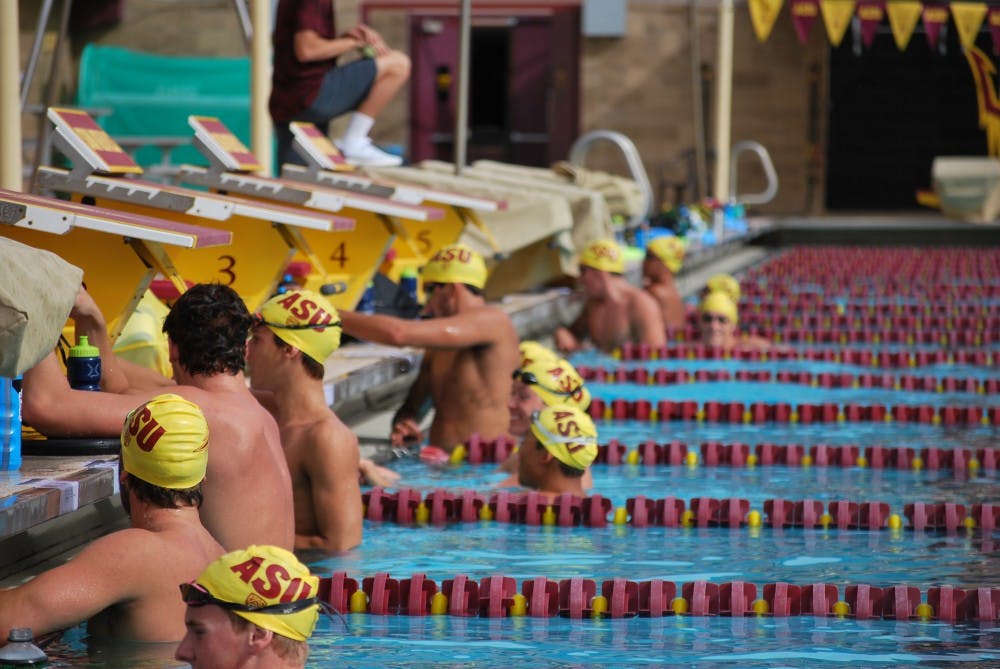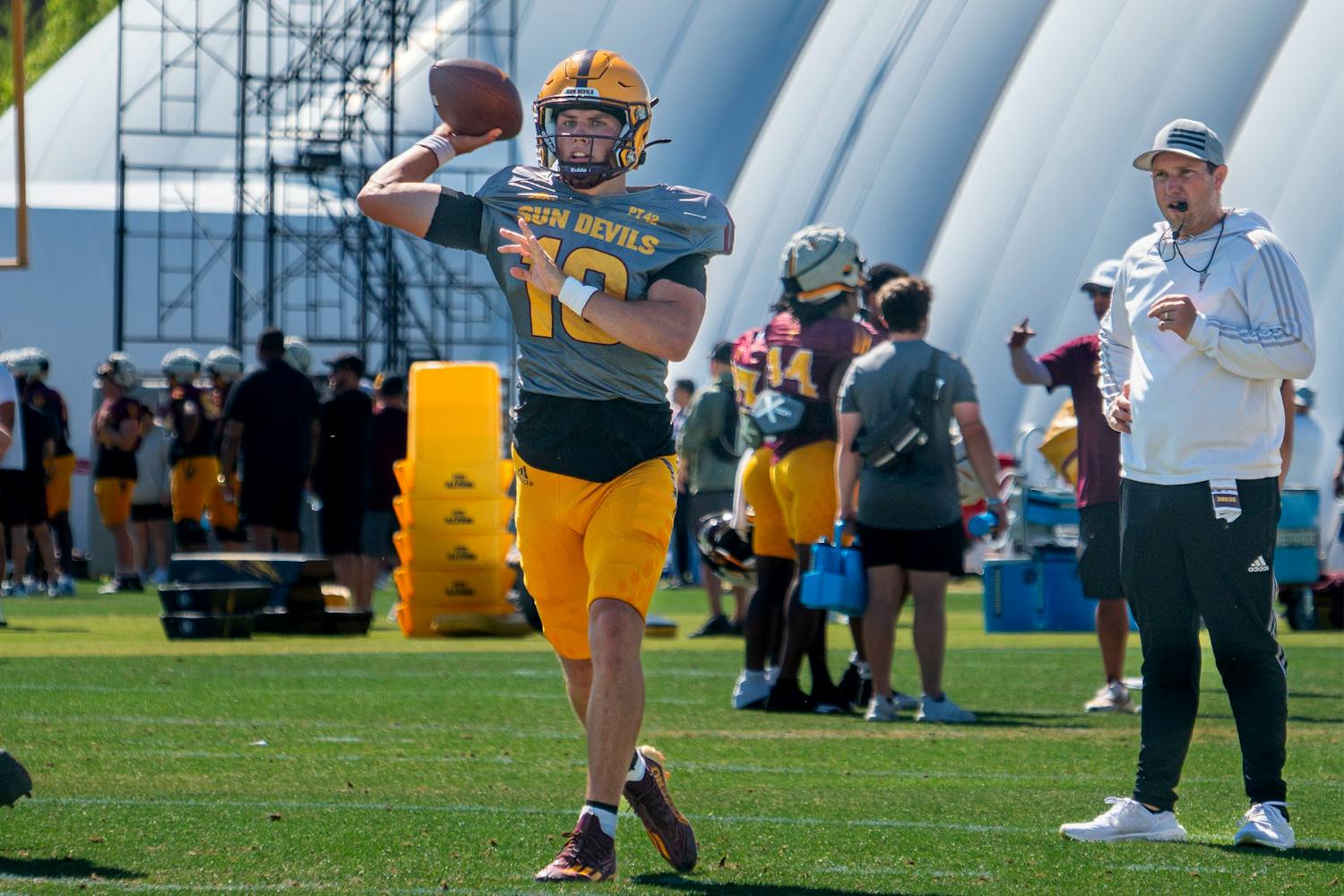Many collegiate athletes look forward to a break after a season of countless hours of strenuous work both in and out of the pool.
However, the term "off-season" may be deceiving for those unfamiliar with the sport of swim and dive.
The ASU swim and dive team wrapped up its season over a month ago, but that doesn’t mean anything for freshman distance freestyler Kendall Dawson. She's quickly transitioned from team workouts to individual training.
“Since I’m a distance swimmer, I really have to focus on keeping my endurance steady because we aren’t swimming as much,” Dawson said. “We do a lot of running. That really helps my legs not die in races.”
Although ASU's official schedule has concluded, Dawson said her and several members of the team swim competitively on club teams.
The seemingly never-ending cycle of swimming doesn’t end when she gets out of the pool. Dawson said she spends hours in the gym and organizing the nutritional aspect of her game during the off-season.
“You have to prepare your body for when it is in season again,” Dawson said.
The heavy workload is just as intense for men’s junior diver David Hoffer. He said he currently spends 20 hours a week working on diving during a time when athletes are supposed to be cooling down.
“The off-season, preseason are really the times the people that want to be the best are going to put in the time. They’re going to put in the time — the extra work — while the ones burned out are going to be resting,” Hoffer said.
Similar to Dawson, Hoffer said he places significant importance on nutrition and lifting, but the majority of his off-season work requires him to remain on the diving board.
“It’s a willingness to maybe not do a right dive, not be trying to do it for tens,” Hoffer said. “But focusing on ‘alright this is what my coach saw on my last dive, this is what needs to change. I’m going to do that again, and again, and again,'” Hoffer said.
Much like lifting at the gym, athletes working in their respective environments break down their muscles during training, and protein is a major nutrient responsible for rebuilding the muscles bigger and stronger.
Brandon Chang, a health and wellness freshman and trainer at the Sun Devil Fitness Complex, said nearly every collegiate athlete experiences an off-season full of work, however, the athletes' exercises vary.
“It really depends on what the sport requires you to do,” he said.
Chang calls having a healthy off-season a type of “lifestyle.” With such a hectic training period, Chang said it ultimately is all for one purpose.
“They want to keep a certain weight because your body is more inclined to that weight, and you’re more comfortable with it,” he said.
If a swimmer or diver is steady with their weight, then it provides them with more repetitions at that specific size, Chang said. This essentially gives the athletes a training advantage over those who are either trying to cut weight, like wrestlers, or bulk up, like football players.
Reach the reporter at atotri@asu.edu or follow @Anthony_Totri on Twitter.
Like State Press Sports on Facebook and follow @statepresssport on Twitter.




